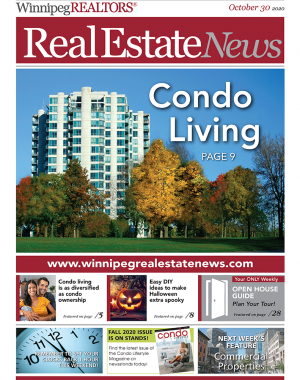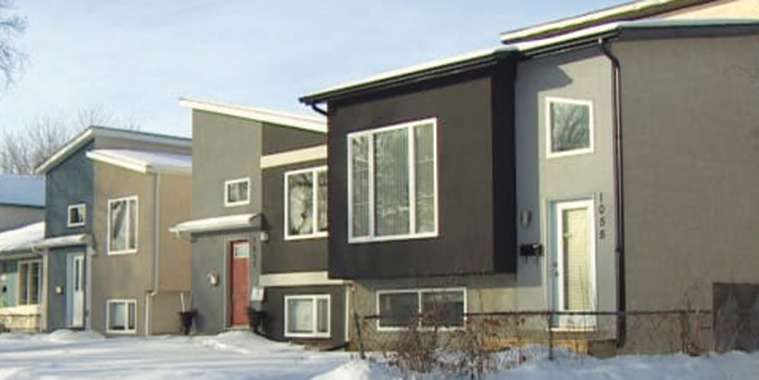By Peter Squire
Infill housing is an integral part of maintaining the viability of older neighbourhoods. Drive through any established neighbourhood in Winnipeg and you’ll see many good examples of this.
After considerable consultation with the public and direct involvement with interested stakeholders such as WinnipegREALTORS® (i.e. participated on technical advisory committee), the residential infill guidelines for mature communities were released last month and public sessions and feedback have now concluded as of October 22, 2020. They, along with in-depth information on all aspects of the infill process and public engagement, are available at winnipeg.ca under residential infill strategy. Comments and questions regarding the draft guidelines can be sent to infillstrategy@winnipeg.ca
As was stated when discussing the strategy, “New housing can be single-family, two-family, townhouse, or multi-family. The goal for this project is to advance a shared vision for small scale residential infill that helps address demand for new housing while preserving neighbourhood quality, character, and liveability.”
Infill is an important part of Winnipeg’s growth plan to 2045 as the updated OurWinnipeg and Complete Communities Direction Strategy 2.0 sets out a target of 50 per cent new builds in the built-up area of the city. Established communities need to accommodate more infill and that includes the mature communities under the composition of these proposed guidelines.
The residential development guidelines and location criteria are intended to make it clearer and more consistent for residents living in mature communities (largely developed on grid street systems before the 1950s), builders/developers and decision-makers on what you can build. Some key parameters specified are building massing (i.e. length and height of building, including lot coverage and building heights), building setbacks, façade materials, landscaping requirements, main floor height, and vehicle access and parking.
Here are some key points regarding infill:
• To keep housing more affordable, we need to take advantage of existing infrastructure to build upon, not just out in the greenfields. This is a matter of fiscal imperative as it will help contain the increasing costs of maintaining and paying for new infrastructure so that property taxes do not become an increasing burden on more property owners, and a detriment to owning property in the future.
• A more compact city gives us a better and more financially sustainable way to utilize our existing infrastructure along with all of the services, like public transit, that comes with it. Moreover, providing more housing options rather than the predominant single family-detached in mature communities is a way to keep housing affordable. Guidelines as illustrated on the winnipeg.ca website show how a duplex can be a good alternative to doing a lot-split.
• Another obvious reason for more infill is to repopulate the 82,000-person decline in the city’s population that occurred from 1971 to 2016. Adding new families and people in general to these older areas injects new life into supporting schools, community centres and local businesses.
• Homes in Winnipeg’s mature communities have a median age of 73 years, with a number in need of major repair. As much as some residents want to see no change in their street profile (e.g. age-in-place housing stock), it is unrealistic. Houses do extend beyond their normal life cycle and eventually need to be replaced. Therefore, it’s a matter of how we do infill, not that it isn’t necessary. There are many good reasons to replace older housing stock, one being that houses built many decades ago are not adequate, suitable, nor desired by contemporary home buyers. A good example of this is how the pandemic has changed what people are looking for in a home, with discerning buyers seeking out more space to accommodate the distinct possibility that one or more household members may be working or learning from home.
As much as some residents — who resist infill development — claim it will negatively impact the value of their home, not building infill can have the same affect by preventing necessary change and reinvestment, and their neighbourhood declines.
In the 1990s, the REALTOR®-led Housing Opportunity Partnership (HOP) intervened with a significant effort to renew and ultimately replace older housing stock in Winnipeg’s West End (east of Arlington Avenue). The lack of reinvestment on the streets and blocks HOP targeted became a destabilizing factor and major contributor to their eventual and visible decay. As a result, average house sale values had plummeted to under $30,000. Today, the average year-to-date single family home sale price is now $175,000. Hard evidence through WinnipegREALTORS® MLS® database shows a number of metrics that can be used to measure the health and vitality of a neighbourhood.
Accepting infill is a given, including the welcome inclusion of secondary suites, but are the new guidelines too restrictive in allowing what buyers want in a new home? For example, how did the planners arrive at 30 per cent lot coverage maximum? Are the setbacks, height restrictions and side yard requirements enough to determine what lot square footage you can have?
Another example is do you need a minimum 50 foot wide lot to build a side-by-side duplex when a 40 foot wide lot can still work? Will the prescreening process that gives infill planners secondary considerations (e.g. zoning) to look at in terms of helping a builder construct a home in keeping with the local neighbourhood context help overcome what appears to be arbitrary limits on what you can do?
What will the additional costs be to build a new infill under these proposed guidelines? Can we keep infill homes as affordable as possible without compromising the ability of an infill builder to make their build compatible with other homes on the street?
One very positive development that coincides with the release of needed infill guidelines is the City of Winnipeg’s plan to step up enforcement and obligations of infill builders to do more to keep their construction sites clean and safe. The construction of infills in established neighbourhoods has generated complaints in the past, and this will address that concern.
A number of city councillors are on board with supporting infill in mature communities — as long as the guidelines help bring more certainty and stability to what has been a difficult process to wade through in recent years.
St. James City Councillor Scott Gillingham summed up his sentiment well in the Canstar
Community News earlier this month, stating, “I support the concept of infill development, provided it is guided by a clear set of predictable rules that ensure any development fits within the context of the existing community and addresses the concerns raised by residents and developers.”
Infill housing has never been more important. Let’s get on with passing the new guidelines.
Peter Squire is WinnipegREALTORS® Vice-President, External Relations & Market Intelligence



